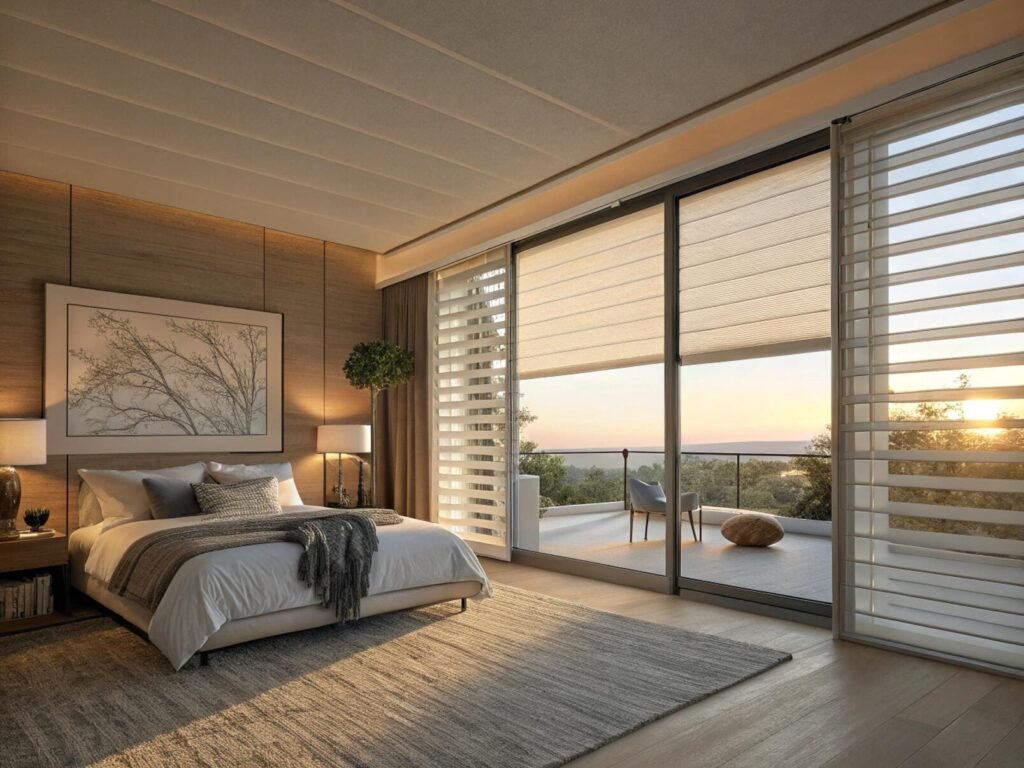You're stuck between the soft, classic look of Roman shades[^1] and the sleek, modern function of Zebra blinds[^2]. Choosing the wrong one means living with a window treatment that doesn't match your daily needs, creating constant frustration.
The best choice depends entirely on your room's function and your lifestyle. Roman shades offer timeless, soft fabric elegance with simple privacy control. Zebra blinds deliver modern, precise light-filtering capabilities[^3] with durable, easy-to-clean materials. One is about warmth, the other is about control.
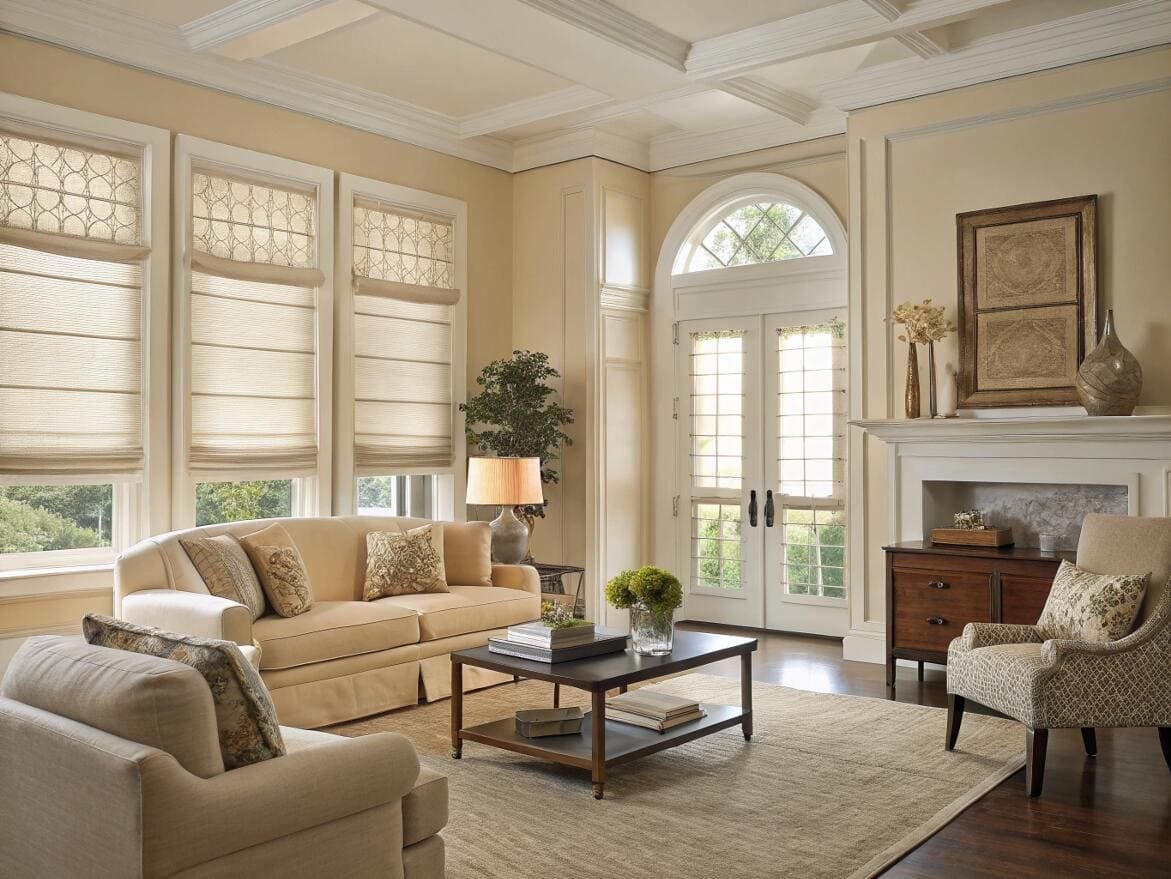
I've found that the conversation I have with clients is changing. Five years ago, the first question was always, "Which one looks better?" Now, project buyers like Emma are asking, "Which one works better for this specific space?" This is a smart shift from thinking about style preference to focusing on functional needs. As a "Smart Choice Consultant," my job is to help you match the product to your life, not just your walls. Let's break down the key differences so you can choose with confidence.
What is the difference between zebra and Roman shades?
You're looking at samples, but they seem like they're from different worlds. One is a soft panel of folded fabric, the other is a modern striped roller. You're struggling to understand the fundamental difference in how they work.
Roman shades are a single piece of fabric that raises and lowers in soft, horizontal folds. Zebra blinds are a continuous loop of fabric with alternating sheer and solid stripes that you align to achieve precise levels of light and privacy.
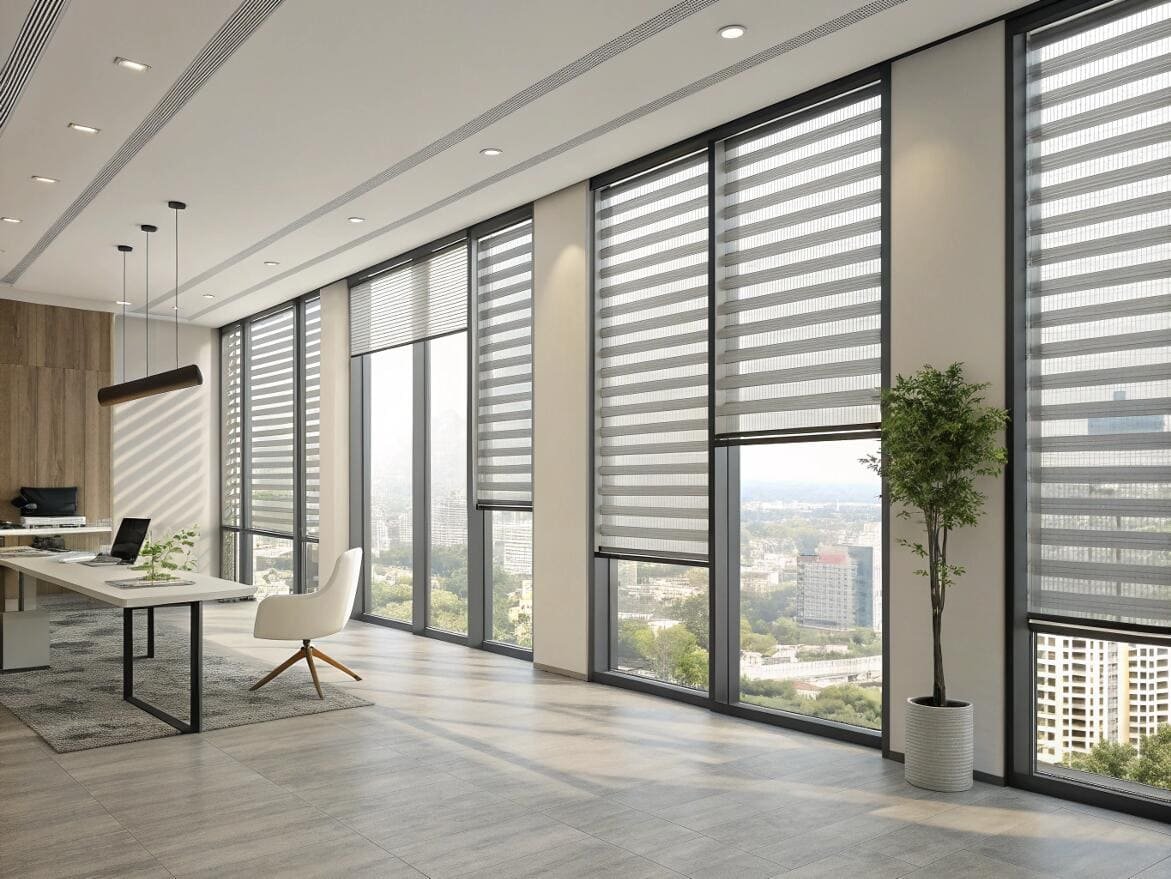
This structural difference is everything. A Roman shade's operation is straightforward: you either have it up for a full view, down for full privacy, or somewhere in between. Its beauty is in the material—often natural fabrics like linen or cotton—that brings warmth and texture to a room. Zebra blinds, on the other hand, are a marvel of modern engineering. They are always "down," but by slightly pulling the cord or using a remote, you shift the alignment of the front and back layers. This allows you to go from a fully solid, private view to an open, sheer "striped" view that lets light in while still offering some daytime privacy[^4]. One offers classic simplicity; the other provides dynamic, functional control.
Roman Shades vs. Zebra Blinds
| Feature | Roman Shades | Zebra Blinds |
|---|---|---|
| Aesthetic | Classic, Soft, Luxurious | Modern, Sleek, Minimalist |
| Material | Natural Fabrics (Linen, Cotton) | Synthetic Fabrics (Polyester) |
| Light Control | Progressive (Up or Down) | Precise (Aligning Stripes) |
| Privacy | All-or-Nothing | Adjustable Daytime Privacy |
| Best For | Bedrooms, Dining Rooms | Living Rooms, Offices, Kitchens |
Can you see through zebra shades at night?
You love the airy, light-filtering feel of your Zebra blinds during the day. But when you turn the lights on at night, you feel exposed, worrying that your living room is on display for the whole street.
Yes, it is possible to see through the sheer stripes of zebra shades at night when your interior lights are on. While the solid bands provide coverage, the overall effect is not one of complete privacy like a solid, lined shade.
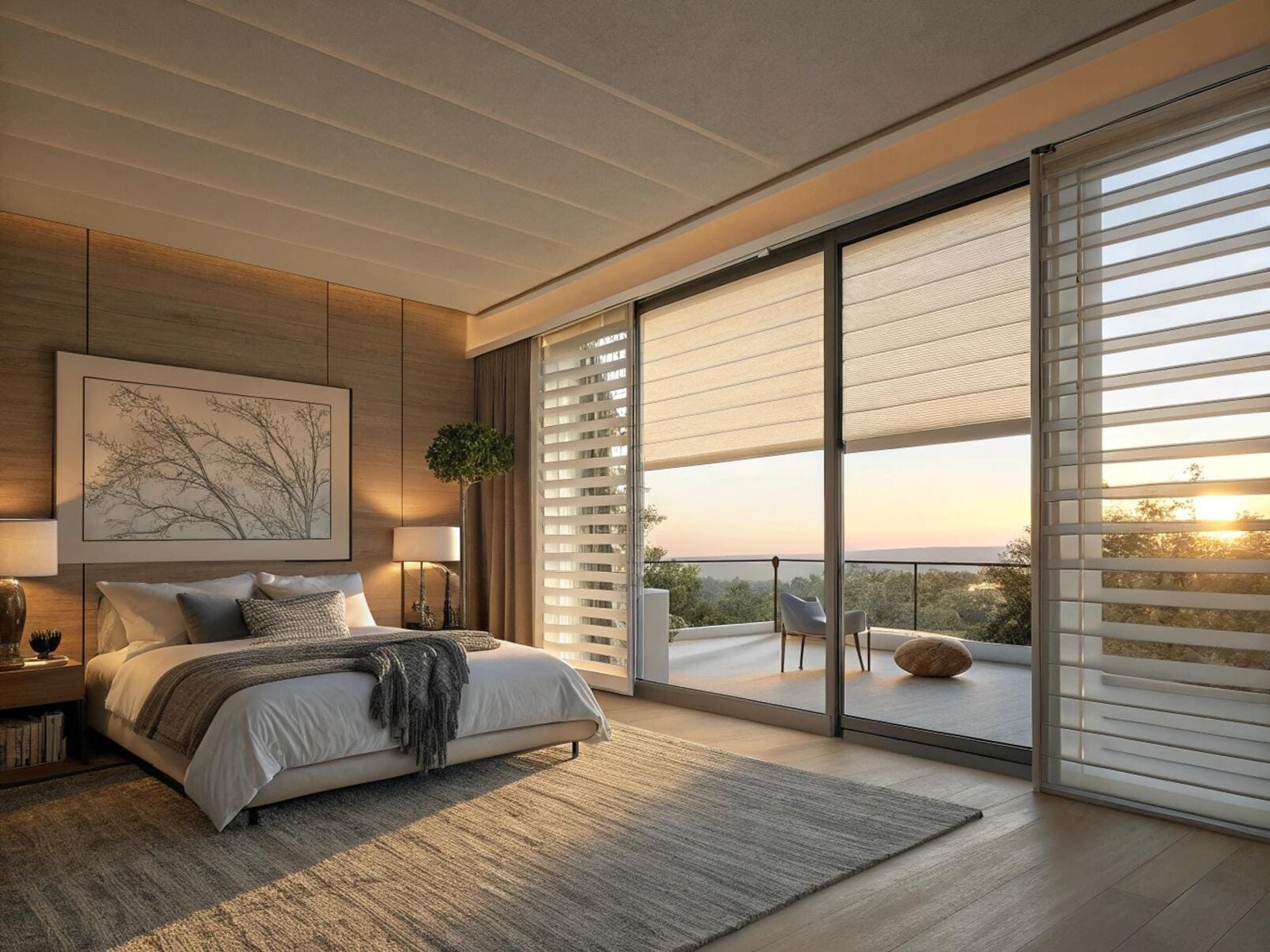
This is the most critical functional difference to understand. The "magic" of zebra blinds works best during the day when it's brighter outside than inside. At night, that principle reverses. Your brightly lit home becomes the focal point, and the sheer stripes can allow a clear view in. For a space like a living room or kitchen, this might not be a major concern. But for a bedroom or bathroom, it's a dealbreaker. This is where a Roman shade excels. When you lower a Roman shade, especially one with a blackout lining, you get 100% guaranteed privacy. For clients who want the modern look of a zebra blind in the bedroom, I often suggest layering them with curtains to close at night. It's a "Hybrid Solution" that solves the problem.
Are zebra blinds hard to clean?
The intricate stripes of a zebra blind look amazing, but you can already imagine dust settling on them. You're worried that keeping them clean will be a time-consuming and difficult chore.
No, zebra blinds are one of the easiest window treatments to clean. Their polyester fabric is naturally resistant to dust and stains. Regular maintenance is as simple as gentle dusting or a quick wipe with a damp cloth.

This is a huge win for busy households. The synthetic material doesn't absorb moisture or odors like natural fabrics can. You can absolutely vacuum zebra blinds using a soft brush attachment on a low setting. For minor spots or water stains, a cloth with a bit of mild soap and water usually does the trick without leaving a mark. Roman shades, on the other hand, require more care. Because they're often made of natural materials like linen, they can be more susceptible to staining and require more delicate handling. Deep cleaning a Roman shade often means calling a professional, whereas a zebra blind can be maintained perfectly with just a few minutes of your time each week. This low-maintenance aspect is a major reason for their popularity.
What is the downside to Roman shades?
You are in love with the luxurious, elegant look of a fabric Roman shade. But you have a practical side that wants to know the potential problems before you commit to the purchase.
The main downsides to Roman shades are their more demanding cleaning requirements, the potential for fabric to fade over time in direct sunlight, and their "all-or-nothing" approach to light and privacy, which offers less flexibility than modern blinds.
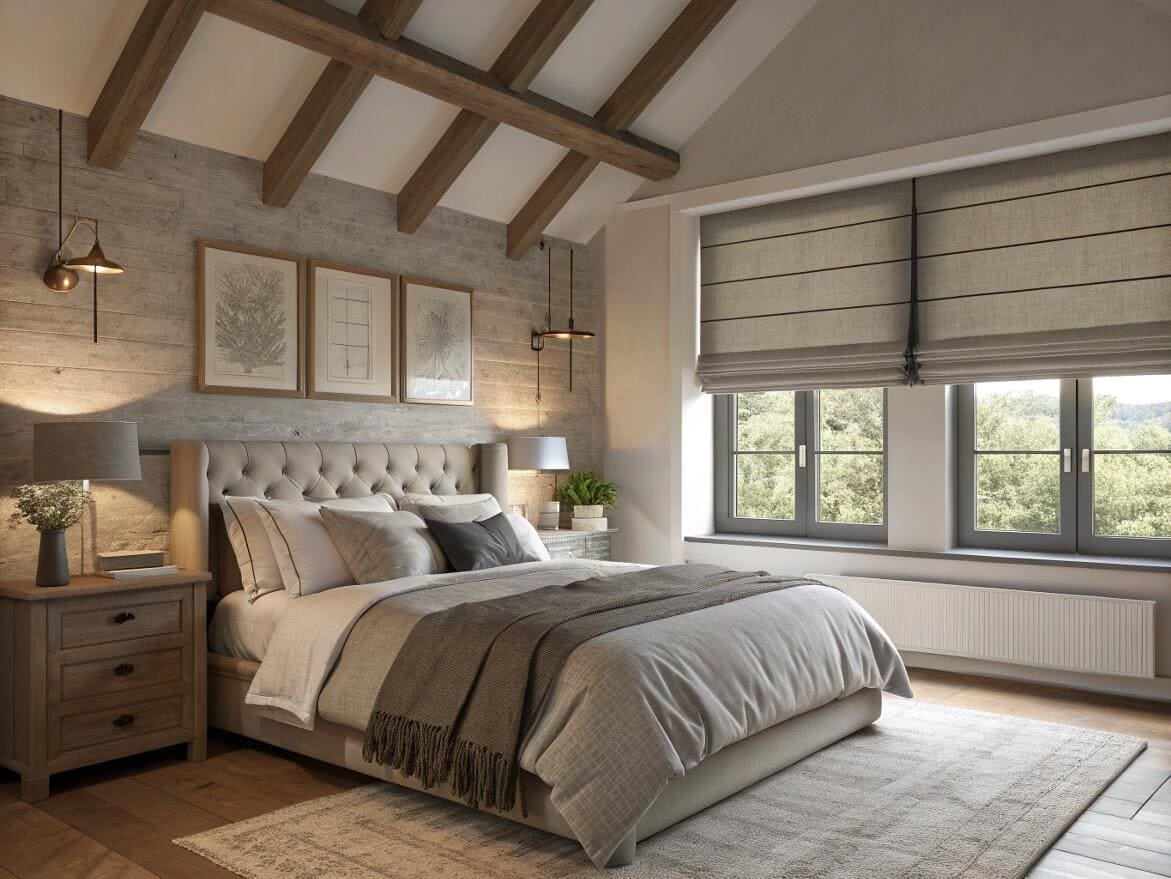
When you choose a Roman shade, you're choosing it for its aesthetic beauty, and that beauty requires some care. Natural fabrics, while beautiful, need to be professionally cleaned to avoid shrinking or damage. They also have a defined lifespan, typically around 5-8 years before you might notice some wear or sun fading, especially with darker colors. Furthermore, the stack of folded fabric at the top, when the shade is raised, does obstruct a portion of the window view. This is a contrast to a zebra blind, which provides its function while fully covering the window. These are not dealbreakers, but they are important lifestyle considerations. A Roman shade is like a beautiful wool coat—timeless and elegant, but you wouldn't wear it in the rain or clean it in a washing machine.
Are zebra blinds a fad?
Zebra blinds look incredibly modern and stylish right now. You're just worried that you'll be investing in a trend that will look dated and out of place in your home in a few years.
No, zebra blinds are not a fad; they are a permanent evolution in window covering technology. They solve a fundamental problem of light control in a very clever way. Their minimalist design and high functionality ensure they will remain a staple of modern interior design[^5].
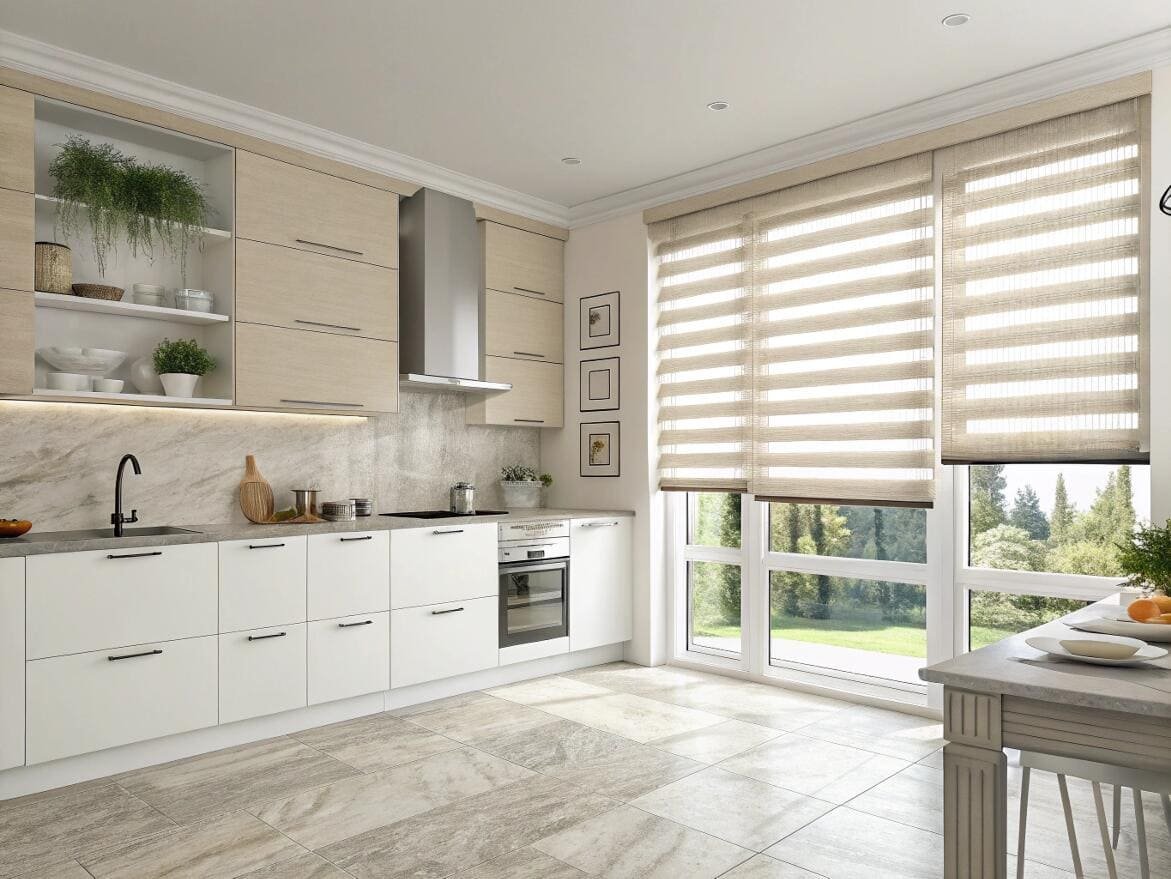
Trends come and go, but solutions to problems stick around. Before zebra blinds, if you wanted to let light in, you had to roll up your shade, sacrificing all privacy. If you wanted privacy, you had to block all the light. Zebra blinds were invented to solve this exact issue, allowing you to have both at the same time. This functional core is why they have staying power. While their popularity has certainly boomed, their clean lines and practical benefits fit perfectly with the long-term trends of minimalist and functional design. Unlike a wild color or pattern that can quickly fall out of fashion, the utility of a zebra blind is timeless. They have become a modern classic, and I expect their durable construction to provide a reliable service life of 8-12 years.
Conclusion
The choice between Roman shades and Zebra blinds is not about which is better, but which is better for you. Match the timeless, cozy privacy of Roman shades to your personal retreats, and use the modern, functional light control[^6] of zebra blinds in your active, daily living spaces.
---
[^1]: Explore the elegance and functionality of Roman shades, perfect for adding warmth and style to your home.
[^2]: Discover the innovative design of zebra blinds that offers precise light filtering and modern aesthetics.
[^3]: Learn about light-filtering options that enhance natural light while maintaining privacy in your space.
[^4]: Discover strategies for achieving privacy during the day while allowing natural light to enter.
[^5]: Explore current trends in modern interior design that can inspire your home decor choices.
[^6]: Find out which window treatments offer the best solutions for controlling light in your space.Partner with VelaBlinds for Your Next Project
Smart window treatments shouldn't be complicated. After working with 500+ distributors and contractors worldwide, I've streamlined the process to get you quality products, competitive pricing, and reliable support - every time.
Why project professionals choose VelaBlinds:
- ✅ Fast, Accurate Quotes - Detailed specs and pricing within 24 hours
- ✅ Transparent Pricing - No hidden fees, volume discounts clearly outlined
- ✅ Quality Assurance - Direct partnerships with certified OEM manufacturers
- ✅ Project Support - Dedicated account manager from quote to delivery
Start your next project:
📧 Quick Quote: Send your requirements to info@velablinds.com
📱 Direct Contact: WhatsApp +86 137 2012 8317
🌐 Browse Solutions: https://velablinds.com/
📁 Product Resources: Access spec sheets, catalogs & project files
Paul Chen, Founder
"I built VelaBlinds to solve the real challenges I faced as a project buyer - long lead times, unclear specs, and unreliable suppliers. Let's discuss how we can power your projects with smarter blinds."
Serving distributors and contractors across North America, Europe, and Australia since 2018.

